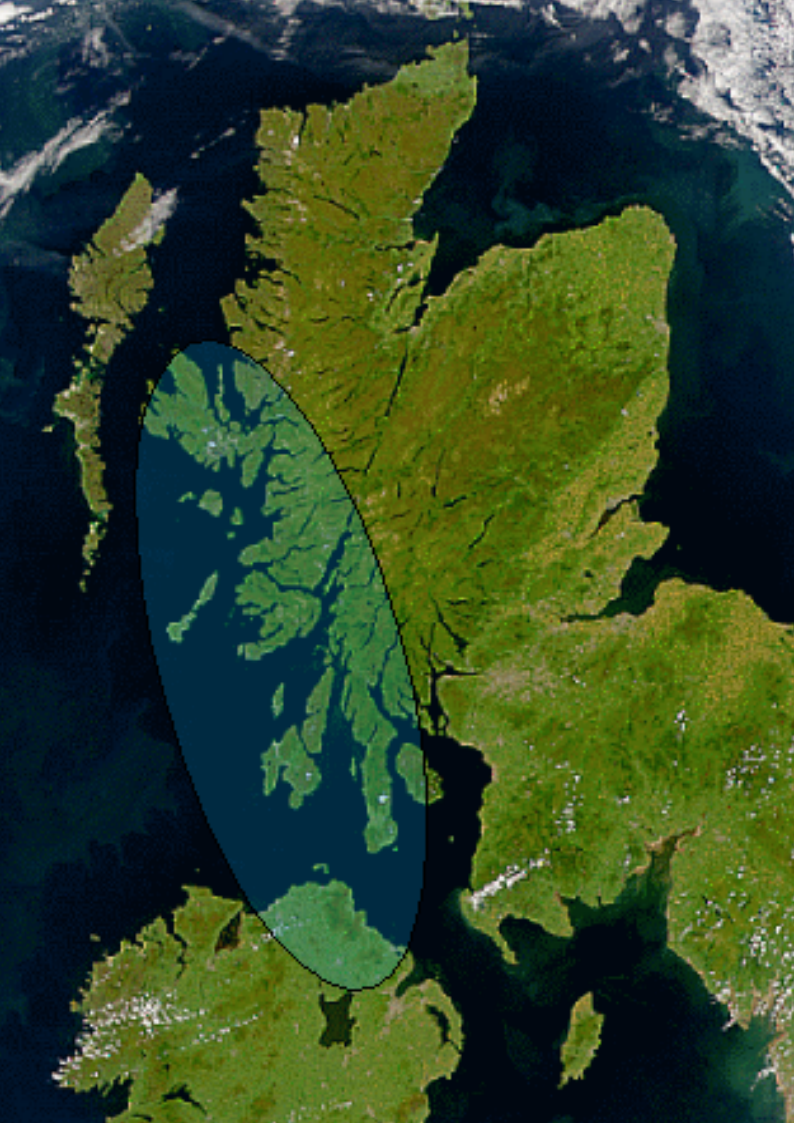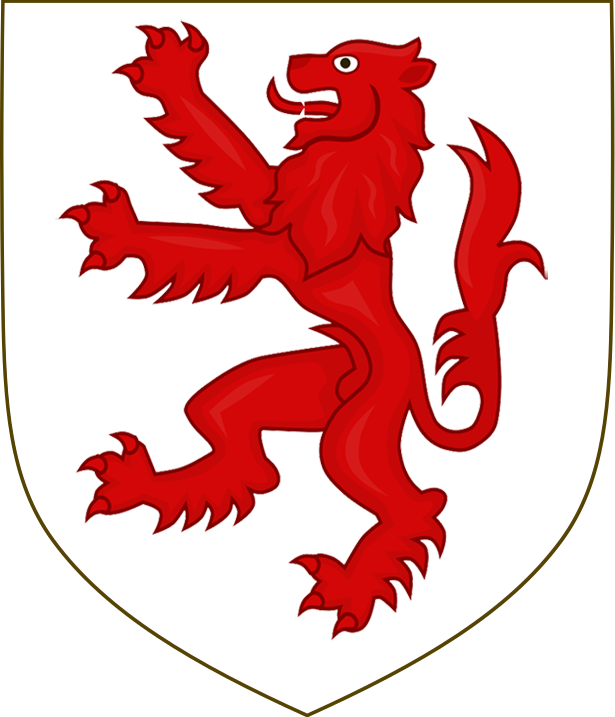|
ÃedÃĄn Mac GabrÃĄin
ÃedÃĄn mac GabrÃĄin (pronounced in Old Irish; ga, AodhÃĄn mac GabhrÃĄin, lang), also written as Aedan, was a king of DÃĄl Riata from 574 until c. 609 AD. The kingdom of DÃĄl Riata was situated in modern Argyll and Bute, Scotland, and parts of County Antrim, Ireland. Genealogies record that ÃedÃĄn was a son of GabrÃĄn mac Domangairt. He was a contemporary of Saint Columba, and much that is recorded of his life and career comes from hagiography such as AdomnÃĄn of Iona's ''Life of Saint Columba''. ÃedÃĄn appears as a character in Old Irish and Middle Irish language works of prose and verse, some now lost. The Irish annals record ÃedÃĄn's campaigns against his neighbours, in Ireland, and in northern Britain, including expeditions to the Orkney Islands, the Isle of Man, and the east coast of Scotland. As recorded by Bede, ÃedÃĄn was decisively defeated by Ãthelfrith of Bernicia at the Battle of Degsastan. ÃedÃĄn may have been deposed, or have abdicated, followin ... [...More Info...] [...Related Items...] OR: [Wikipedia] [Google] [Baidu] |
Kilkerran, Argyll
Campbeltown (; gd, Ceann Loch Chille Chiarain or ) is a town and former royal burgh in Argyll and Bute, Scotland. It lies by Campbeltown Loch on the Kintyre peninsula. Campbeltown became an important centre for Scotch whisky, and a busy fishing port. The 2018 population estimate was 4,600 indicating a reduction since the 2011 census. History Originally known as Kinlochkilkerran (an anglicization of the Gaelic, which means 'head of the loch by the kirk of CiarÃĄn'), Campbeltown was renamed in the 17th century as ''Campbell's Town'' after Archibald Campbell (Earl of Argyle) was granted the site in 1667. Campbeltown Town Hall was completed in 1760. Whisky Campbeltown is one of five areas in Scotland categorised as a distinct malt whisky producing region, and is home to the Campbeltown single malts. At one point it had over 30 distilleries and proclaimed itself "the whisky capital of the world". However, a focus on quantity rather than quality, and the combination of Prohi ... [...More Info...] [...Related Items...] OR: [Wikipedia] [Google] [Baidu] |
John Bannerman (historian)
John Walter MacDonald Bannerman (13 August 1932 â 8 October 2008) was a Scottish historian, noted for his work on Gaelic Scotland. Biography He was born in Balmaha, Stirlingshire, the son of John MacDonald Bannerman, later Lord Bannerman of Kildonan, and his wife Ray Mundell. His family were native speakers of Scottish Gaelic, and Bannerman studied Celtic languages at the University of Glasgow and completed his doctorate at the University of Cambridge where he was taught by Kathleen Hughes. Although he considered teaching Gaelic in schools, Bannerman instead took up a post at the Celtic department of the University of Aberdeen before joining the history department at the University of Edinburgh in 1967. He took over the running of the family farm at Balmaha in 1968, shortly before his father's death, dividing his time between teaching at the University, writing and farming. His work on Gaelic Scotland was influential. His early works on DÃĄl Riata, the Senchus fer n-Alba ... [...More Info...] [...Related Items...] OR: [Wikipedia] [Google] [Baidu] |
Leinster
Leinster ( ; ga, Laighin or ) is one of the provinces of Ireland, situated in the southeast and east of Ireland. The province comprises the ancient Kingdoms of Meath, Leinster and Osraige. Following the 12th-century Norman invasion of Ireland, the historic "fifths" of Leinster and Meath gradually merged, mainly due to the impact of the Pale, which straddled both, thereby forming the present-day province of Leinster. The ancient kingdoms were shired into a number of counties for administrative and judicial purposes. In later centuries, local government legislation has prompted further sub-division of the historic counties. Leinster has no official function for local-government purposes. However, it is an officially recognised subdivision of Ireland and is listed on ISO 3166-2 as one of the four provinces of Ireland. "IE-L" is attributed to Leinster as its ''country sub-division'' code. Leinster had a population of 2,858,501 according to the preliminary results of the 20 ... [...More Info...] [...Related Items...] OR: [Wikipedia] [Google] [Baidu] |
The Prophecy Of BerchÃĄn
''The Prophecy of BerchÃĄn'' is a relatively long historical poem written in the Middle Irish language. The text is preserved in the Royal Irish Academy as MS 679 (23/G/4), with a few early modern copies. It is a prophecy made in the Early Middle Ages. Composition The text consists of 205 ' stanzas, two of which are corrupt (128, 168). It is divided into two parts. The reputed author of part one (stanzas 1-96) is an Irish abbot named BerchÃĄn, from whom the poem's name originates. Part one consists of a history of BerchÃĄn's own monastery, a recount of Viking attacks, and descriptions of the reigns of nineteen Irish kings. Part two (stanzas 97â206) is presented as an anonymous prophecy given around the death of Saint Patrick in the 5th century, prophesying the life of Columba and King ÃedÃĄn mac GabrÃĄin, and 24 Scottish kings, from CinÃĄed mac AilpÃn Kenneth MacAlpin ( mga, CinÃĄed mac Ailpin, label= Medieval Gaelic, gd, Coinneach mac Ailpein, label=Modern Scottish G ... [...More Info...] [...Related Items...] OR: [Wikipedia] [Google] [Baidu] |
King Of Leinster
The kings of Leinster ( ga, RÃ LaighÃn), ruled from the establishment of Leinster during the Irish Iron Age, until the 17th century Early Modern Ireland. According to Gaelic traditional history, laid out in works such as the ''Book of Invasions'', Leinster originates from the division of Ireland between the Irish Gaels, descendants of Milesius: Leinster was one of the territories held by the offspring of Heremon. In the 7th century BC, the branch of the Heremonians who would establish Leinster, starting with Ãgaine MÃģr were also High Kings of Ireland and Kings of Tara. Their ascent to hegemony in Ireland was associated with the decline in influence of their Ulster-based Heremonian kinsmen from the Ãrainn. Aside from Ãgaine MÃģr, other prominent Kings of Leinster from this period who were also High Kings of Ireland were Labraid Loingsech and Cathair MÃģr. A mythology developed that Labraid Loingsech had horses ears: he spent some time exiled in Transalpine Gaul (da ... [...More Info...] [...Related Items...] OR: [Wikipedia] [Google] [Baidu] |
Brandub Mac Echach
Brandub mac Echach (died 605) was an Irish king of the Uà Cheinnselaig of Leinster. His father, Echu mac Muiredaig had been a king of the Ui Cheinnselaig. They belonged to a branch known as the Uà Felmeda descended from Fedelmid, son of Ãnnae Cennsalach. His son Ãengus, grandson Muiredach, and great-grandson Eochu were all kings of the Uà Cheinnselaig. According to the ''Book of Leinster,'' Brandub succeeded Ãed Cerr mac ColmÃĄin MÃĄr (died 595) of the Uà DÚnlainge as king of Leinster (actually Ãed Dibchine mac Senaig of the Uà MÃĄil) Birth saga In the ''Rawlinson B 502 manuscript,'' dated to c. 1130, is the poem ''Gein Branduib maic Echach ocus AedÃĄin maic GabrÃĄin'' (''The Birth of Brandub son of Eochu and of AedÃĄn son of GabrÃĄn''). This tells how ÃedÃĄn mac GabrÃĄin of DÃĄl Riata was Brandub's twin brother, exchanged at birth for one of the twin daughters of GabrÃĄn, born the very same night, so that each family might have a son. Whether the tale is entirely f ... [...More Info...] [...Related Items...] OR: [Wikipedia] [Google] [Baidu] |
Rawlinson B 502
Oxford, Bodleian Library, Rawlinson B 502 is a medieval Irish manuscript which presently resides in the Bodleian Library, Oxford. It ranks as one of the three major surviving Irish manuscripts to have been produced in pre-Norman Ireland, the two other works being the Lebor na hUidre and the Book of Leinster. Some scholars have also called it the Book of Glendalough, in Irish ''Lebar Glinne DÃĄ Locha'', after several allusions in medieval and early modern sources to a manuscript of that name. However, there is currently no agreement as to whether Rawlinson B 502, more precisely its second part, is to be identified as the manuscript referred to by that title. It was described by Brian à CuÃv as one of the "most important and most beautiful ... undoubtedly the most magnificent" of the surviving medieval Irish manuscripts. PÃĄdraig à Riain states ".. a rich, as yet largely unworked, source of information on the concerns of the community at Glendalough in or about the year 1131, ... [...More Info...] [...Related Items...] OR: [Wikipedia] [Google] [Baidu] |
CummÃĐne Find
CummÃĐne Find (Latinised, Cummeneus Albus, CummÃĐne "the White", died 669) was the seventh abbot of Iona (657â669). He was the nephew of a previous abbot, SÃĐgÃĐne and great-nephew of LasrÃĐn. It was during CummÃĐne's abbacy that the Northumbrians decided against adopting the Gaelic dating of Easter at the Synod of Whitby in 664, resulting in the loss of control of the Ionan offshoot Gaelic church at Lindisfarne. In 664, the last Gaelic abbot/bishop of Lindisfarne, ColmÃĄn, resigned his post and returned to Iona. It was during CummÃĐne's abbacy that the Book of Durrow was first produced, although this probably happened at Durrow itself, rather than Iona. CummÃĐne is known to have visited Ireland in 663, perhaps on a tour of daughter houses. He is known to have written a Vita of Columba, ''"De uirtutibus sancti Columbae'' ("On the Virtues of Saint Columba"). This text was then later inserted into the Schaffhausen manuscript of AdomnÃĄn AdomnÃĄn or AdamnÃĄn of Iona (, la, A ... [...More Info...] [...Related Items...] OR: [Wikipedia] [Google] [Baidu] |
Genealogy
Genealogy () is the study of families, family history, and the tracing of their lineages. Genealogists use oral interviews, historical records, genetic analysis, and other records to obtain information about a family and to demonstrate kinship and pedigrees of its members. The results are often displayed in charts or written as narratives. The field of family history is broader than genealogy, and covers not just lineage but also family and community history and biography. The record of genealogical work may be presented as a "genealogy", a "family history", or a " family tree". In the narrow sense, a "genealogy" or a "family tree" traces the descendants of one person, whereas a "family history" traces the ancestors of one person, but the terms are often used interchangeably. A family history may include additional biographical information, family traditions, and the like. The pursuit of family history and origins tends to be shaped by several motives, including the desire ... [...More Info...] [...Related Items...] OR: [Wikipedia] [Google] [Baidu] |
Senchus Fer N-Alban
The ''Senchus fer n-Alban'' (''The History of the men of Scotland'') is an Old Irish medieval text believed to have been compiled in the 10th century. It provides genealogies for kings of DÃĄl Riata and a census of the kingdoms which comprised DÃĄl Riata. Description The ''Senchus'' exists in a number of manuscripts, of which the most important belonged to Dubhaltach Mac Fhirbhisigh and then to Edward Lhuyd. This, Ms. H.2.7 held by Trinity College Dublin, was compiled in the 14th century by LÚcÃĄs à DallÃĄin, probably working with SeÃĄn MÃģr à DubhagÃĄin (died 1372), the chief poet and historian of the Uà Maine. This manuscript was once thought to have formed part of the '' Book of Uà Maine'', but this is no longer considered plausible. Other examples are found in the ''Book of Ballymote'' (1384x1406), the ''Book of Lecan'' (before 1418), and in Mac Fhirbhisigh's 17th-century genealogical compilations. It may have been derived from earlier documents of the 7th century which ... [...More Info...] [...Related Items...] OR: [Wikipedia] [Google] [Baidu] |

.jpg)


